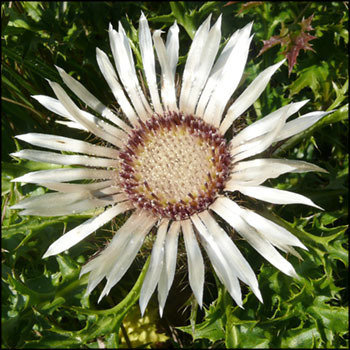





Adventurous gardeners love to experiment, and what better way than to explore some of the lesser-known perennials that don't usually inhabit the local greenhouse. These plants will probably be varieties that you'll need to order (or special order from your local nursery), but the ones covered in this series over the next several articles will bring pleasure and interest to your gardens that will make the search worthwhile. Each article in the series will feature one sun-loving and one shade-loving plant.
(Editor's Note: This article was originally published on July 14, 2010. Your comments are welcome, but please be aware that authors of previously published articles may not be able to respond to your questions.)
SHADY CHARACTER
Bowman’s root (Gillenia trifoliata) is an outstanding performer in bright shade or partial sun, AND it has the definite positive qualities of being deer-resistant and drought-tolerant. This U.S. native is also known as Indian Physic or American Ipecac, and sometimes the additional botanical name of Porteranthus trifoliatus. The plant was used by Native Americans as a powerful emetic, and early English settlers learned of the plant’s medicinal qualities through the natives.
In a mass planting, bowman’s root makes a lovely display of lacy white flowers, and it is excellent for planting around trees, as long as the bed includes organic mulch. Mature plants will spread to 3 feet, reaching heights of 2 to 3 feet. It grows wild in most of the eastern U.S., from Massachusetts to Georgia, and is found in several midwestern states (Illinois, Missouri, Arkansas, Michigan) and in Ontario, Canada.
Bowman’s root late spring through late summer flowers are delicate blossoms on terminal panicles; the petioles are red and the stems are mahogany, a lovely contrast to the bright green leaves. The plant is an excellent choice for a wildflower garden or shade garden, and requires moist acid to neutral rich soil. Gillenia trifoliata is easily grown from seed and will reseed itself, filling in bare spots where other plants have finished or not yet emerged. This plant is hardy in zones 4 to 8.
SUN LOVER

Silver Thistle (Carlina acaulis) Photo by Bernd Haynold GFDL
Another little-known or used perennial with medicinal qualities is silver thistle (Carlina acaulis). The interesting European native is also known as stemless carline thistle or dwarf carline thistle. If you have a spot in the garden with poor soil and lots of sun, then silver thistle would be an excellent choice. Mature plants are drought-tolerant and deer-resistant.
The flowers, roots, and stems of silver thistle are edible, and medicinal uses include carminative, diaphoretic, digestive, diuretic, emetic, febrifuge, and purgative. NOTE: Carlina acaulis is seldom used in modern herbal medicine, so be sure to check with a professional before using it for anything other than garden interest.
Hardy to zone 4, this biennial/perennial member of the Asteraceae family flourishes in dry, sandy or rocky slopes, and seems to prefer limestone. It will not grow in shade. Be sure to plant silver thistle in its permanent location, as it resents having its roots disturbed. The 3- to 4-inch flowers appear in June and continue through September; they have the interesting distinction of closing up in wet weather, for which they have been called the "barometer plant." The flowers rest directly on the basal rosette, hence the term “stemless.” The plant is self-fertile, having hermaphrodite flowers that are pollinated by bees, moths, and butterflies. Seeds begin to ripen in July and continue through August. The flower heads are prized for dried flower arranging.
Silver Thistle can be grown from seed, beginning with a cold frame in spring, and setting seedlings out when the soil has warmed sufficiently. Unfortunately, this plant does not have a long life cycle, usually only two to three seasons.
Photo of bowman's root used with permission at Wikimedia (GFDL)
Increase your plant yield with good lighting and Vortex fans
Plant Nursery Devon - Beautify Your Garden with Healthy and Safe Plants
Planting Perennials in Your Garden
Adding a Pond Plant to Your Pond
Plant Shrubs and Perennials For All-Season Color
10 Cold- and Heat-Tolerant Perennials and Shrubs for the Arid West
Copyright © www.100flowers.win Botanic Garden All Rights Reserved